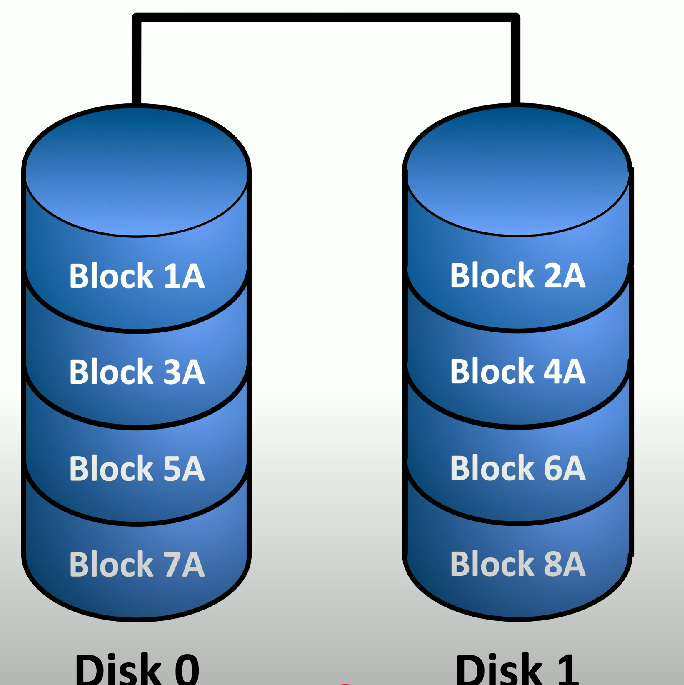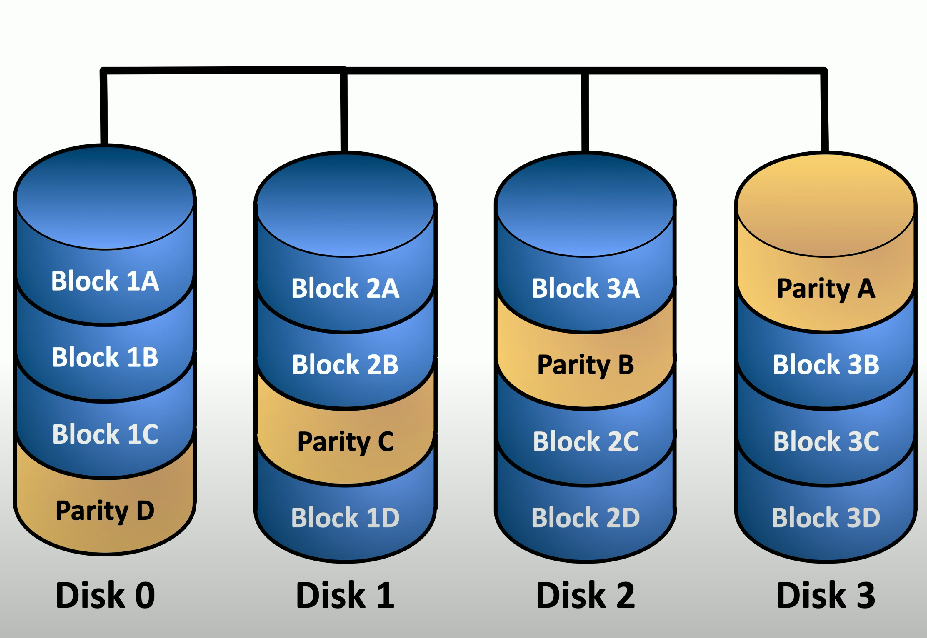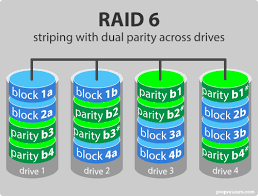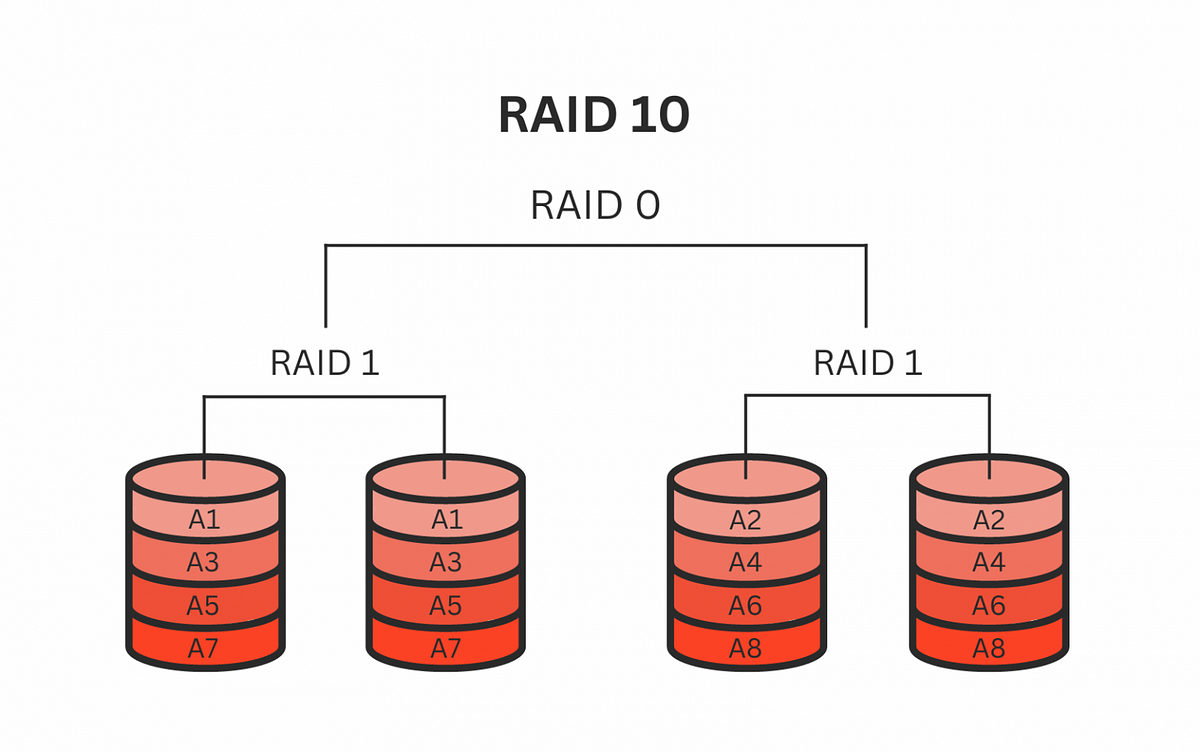3.4b - RAID: Professor Messer
1/10
There's no tags or description
Looks like no tags are added yet.
Name | Mastery | Learn | Test | Matching | Spaced |
|---|
No study sessions yet.
11 Terms
Redundant Array of Independent Disks (RAID)
Technology used to combine multiple hard drives into a single unit for improved performance and redundancy.
Why RAID is not a backup
RAID uses data that is actively retrieved or stored - it is not a backup of data in a separate location.
RAID 0

Striping - a RAID system that stripes data evenly onto multiple disks to enhance performance but provides no redundancy.
RAID 1

Mirroring - a RAID system that mirrors data between two or more drives, offering high redundancy and requiring double disk space.
RAID 5

Striping with parity - a RAID system that stripes data across multiple drives while storing a single parity block for high redundancy and efficient space utilization.
RAID 6

Striping with double parity - RAID system that uses double parity blocks, allowing two drives to fail without data loss but may slow performance.
RAID 10 (RAID 1+0)

A stripe of mirrors - combines RAID 0 (striping) with RAID 1 (mirroring) for high redundancy and high speed, requiring at least four drives.
Data Redundancy in RAID
The ability to recover data after a drive failure, present in RAID 1, RAID 5, and RAID 6.
Performance Enhancement in RAID
The improved speed in data access and retrieval, primarily seen in RAID 0.
Parity in RAID systems
Extra data stored in RAID arrays that allow for data recovery in case of a single drive failure, used in RAID 5 and RAID 6.
RAID system requirements
Different RAID configurations require a specific number of drives, with RAID 10 needing at least four.